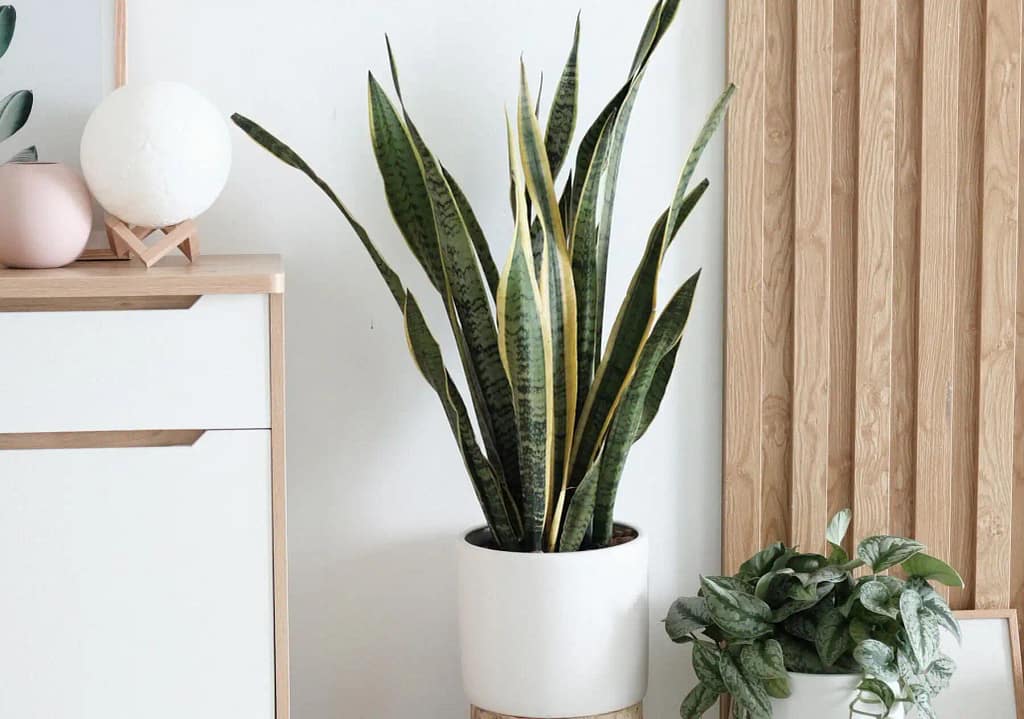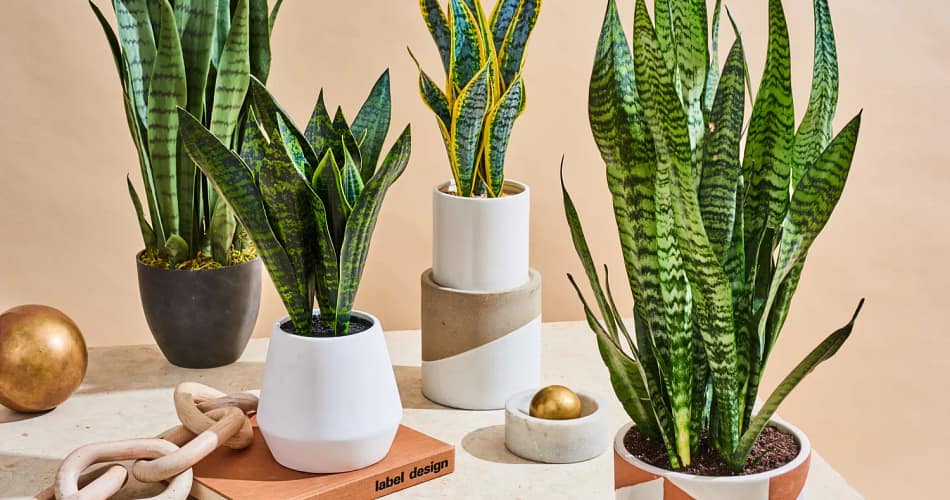What is snake plant ?
The Snake plant (Dracaena trifasciata), also known as Sansevieria or mother-in-law’s tongue, is a popular indoor plant characterized by its upright, sword-shaped leaves. It is part of the Asparagaceae family and originates from tropical regions in Africa and Asia.Snake plants are admired for their hardiness and ability to tolerate low light and neglect, making them ideal for indoor environments where other plants might struggle. They come in various cultivars with different leaf patterns and sizes, adding a decorative touch to homes and offices while also helping to purify indoor air.
Know more about Dracaena click :- Dracaena
Let’s explore some of the most common and beloved Dracaena varieties.
To grow a snake plant at home and care:
Caring for Dracaena trifasciata (commonly known as snake plant or mother-in-law’s tongue) at home involves the following steps:
- Light: Place in indirect sunlight. Snake plants can tolerate low light conditions but grow best in moderate to bright indirect light. Also avoid direct sunlight as it can scorch the leaves.
- Watering: Let the soil dry completely between waterings. Snake plants thrive in slightly dry conditions and are highly drought-tolerant. Water deeply, then wait for the top inch or two of soil to dry out before watering again. In winter, decrease watering frequency since the plant’s growth slows down
- Soil: Use well-draining potting mix suitable for succulents or cacti. A mix of potting soil, sand, and perlite works well to ensure good drainage.
- Temperature: Snake plants prefer average room temperatures between 60-80°F (15-27°C). They are vulnerable to cold drafts and should be shielded from abrupt temperature fluctuations.
- Humidity: Snake plants are adaptable to average household humidity levels. They do not require high humidity but benefit from occasional misting, especially in very dry indoor environments.
- Fertilization: Feed with a balanced houseplant fertilizer diluted to half-strength during the growing season (spring and summer). Fertilize conservatively, as snake plants do not require frequent feeding.
- Pruning: Trim yellow or damaged leaves as necessary to maintain the plant’s appearance and health.
- Repotting: Repot snake plants every 2-3 years or when they outgrow their pot and use a slightly larger container with a fresh potting mix.
- Pests and Diseases: Snake plants are resistant to pests and diseases. However, watch for signs of pests like spider mites or mealybugs, especially if the plant’s health declines.
By following these care guidelines, you can ensure your Dracaena trifasciata thrives and remains a beautiful addition to your indoor space.
Snake plants are low-maintenance and adaptable, making them ideal for beginners and busy households.

Snake plants (Dracaena trifasciata) diseas with solutions:
Snake plants (Dracaena trifasciata) are generally hardy and resistant to most pests and diseases. However, they can occasionally encounter issues. Here are some common diseases and their solutions:
- Root Rot: This occurs due to overwatering or poor drainage, leading to soggy soil and root suffocation.
- Solution: Allow the soil to dry out between watering. Ensure the pot has drainage holes and use well-draining potting mix. Trim any affected roots and repot in fresh soil if necessary.
- Leaf Spot: Leaf spots appear as brown or yellow lesions on the leaves, caused by fungal or bacterial infections.
- Solution: Remove affected leaves promptly to prevent the spread of infection.Ensure adequate air circulation around the plant and avoid watering from above. If needed, apply a fungicide following the manufacturer’s guidelines.
- Pests (e.g., Spider Mites, Mealybugs): Pests can sometimes infest snake plants, especially if conditions are too dry.
- Solution: Remove pests by using a cotton swab dipped in rubbing alcohol. Regularly inspect the plant for signs of pests and isolate if necessary. Increase humidity around the plant by misting occasionally or using a humidifier.
- Yellowing : Leaves: Yellow leaves may signal overwatering, underwatering, or nutrient deficiencies.
- Solution: Adjust your watering schedule to maintain moist, but not waterlogged, soil. Provide balanced fertilizer during the growing season and trim yellow leaves to promote healthy growth.
- Stem Rot: This can occur if water accumulates at the base of the plant, leading to rotting of the stem.
- Solution: Ensure the plant’s pot has drainage holes and avoid overwatering. Trim affected areas and repot if necessary, using fresh soil.
- Fungal Diseases (e.g., Powdery Mildew): Fungal infections like powdery mildew can sometimes affect snake plants, especially in humid conditions.
- Solution: Improve air circulation around the plant. Ensure the leaves are not constantly wet and avoid overcrowding plants. Use a fungicide specifically formulated for powdery mildew, following the instructions carefully.
By monitoring your snake plant regularly and addressing any issues promptly, you can help keep it healthy and thriving. Remember that prevention, such as proper watering and good airflow, is key to minimizing the risk of diseases in snake plants.
Snake plants (Dracaena trifasciata) smell or not?
Snake plants (Dracaena trifasciata) generally do not have a strong smell. Their foliage is typically odorless, which is one reason why they are popular indoor plants. However, there can be exceptions or instances where individual plants may develop a slight odor under certain conditions:
- Soil Conditions: If the soil is kept consistently wet or becomes waterlogged, it can lead to root rot, which may produce a foul smell. Proper watering practices (allowing the soil to dry out between waterings) can prevent this.
- Stagnant Air: In poorly ventilated or humid environments, stagnant air can sometimes cause a musty smell around the plant. Ensuring good air circulation around the plant.
- Pest Infestations: Occasionally, pests like fungus gnats or mealybugs can infest snake plants, which may produce an unpleasant odor. Regular inspection and pest control measures can mitigate this.
In general, a healthy snake plant should not have a noticeable odor. If you notice any unusual smells, it’s essential to investigate and address the underlying cause, such as improper watering, poor ventilation, or pests, to maintain the plant’s health and aesthetics.

